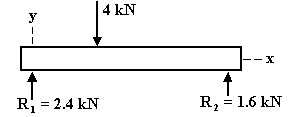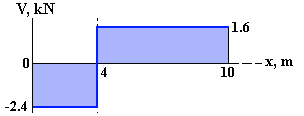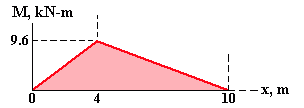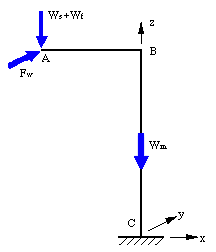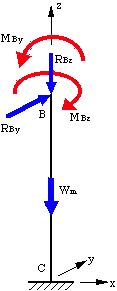|
Sol'n: From the FBD of the entire beam, the reaction forces at the supports are found by taking moments about each end:
SMx=0 = 0  –(4 kN)(4 m) + R2(10 m) = 0 –(4 kN)(4 m) + R2(10 m) = 0
SMx=10 = 0  (4 kN)(6 m) – R1(10 m) = 0 (4 kN)(6 m) – R1(10 m) = 0
R1 = 2.4 kN R2 = 1.6 kN
Check: SFy= 2.4 kN + 1.6 kN – 4 kN = 0 OK
A segment of the beam of length x (0< x < 4 m) is next isolated and treated as a FBD. The internal shear force and bending moment acting on the segment are shown in their positive directions (per this text).
Applying equilibrium:
S Fy = 0  2.4 + V(x) = 0 2.4 + V(x) = 0
 V(x) = –2.4 kN V(x) = –2.4 kN
S M = 0  M(x) – 2.4x = 0 M(x) – 2.4x = 0
 M(x) = 2.4x kN·m M(x) = 2.4x kN·m
These internal loads act on any cross-section of the beam to the left of the 4 kN load (x<4m).
A segment of the beam to the right of the 4-kN load is next isolated in a similar manner. Equilibrium gives:
S Fy = 0  V(x) = 1.6 kN V(x) = 1.6 kN
S M = 0  M(x) = 1.6(10 – x) kN·m M(x) = 1.6(10 – x) kN·m
These internal loads act on any cross-section of the beam to the right of the point load (x>4m).
V(x) and M(x) can be plotted on Shear Force and Bending Moment Diagrams.
- Between R1 and the 4-kN point load, the internal shear force has a constant value of –2.4 kN (the negative sign indicates the shear force acts downward on a positive x-face, opposite drawn). To the right of the point load the shear force has a value of +1.6 kN.
- From x = 0 to 4 m, the bending moment increases linearly from of 0 to 9.6 kN·m. To the right of the load, the bending moment decreases linearly from 9.6 kN·m to 0.
The change in moment between two cross-sections is the negative
in area under the shear diagram. From 0 to 4 m: Area = (2.4 N)(4 m) = 9.6 kN·m].
Beams are covered in more depth in Chapter
6.
|
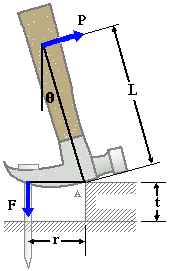
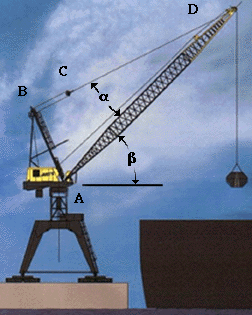

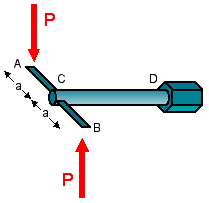


 (4 kN)(6 m) – R1(10 m) = 0
(4 kN)(6 m) – R1(10 m) = 0
